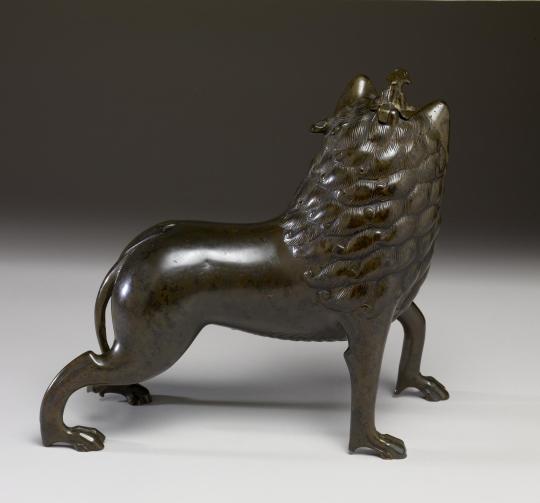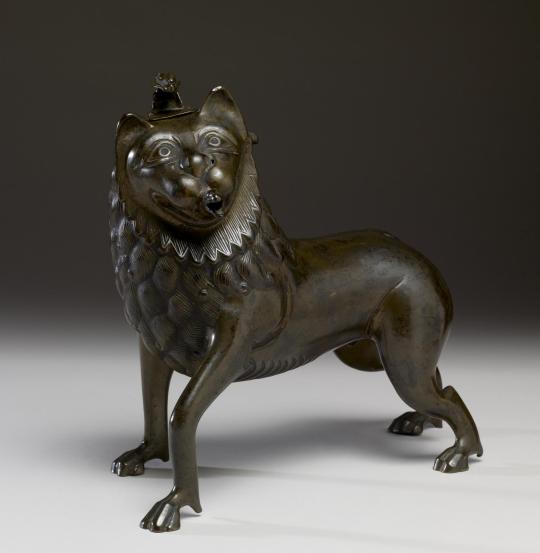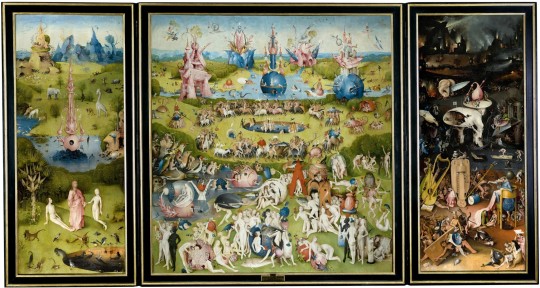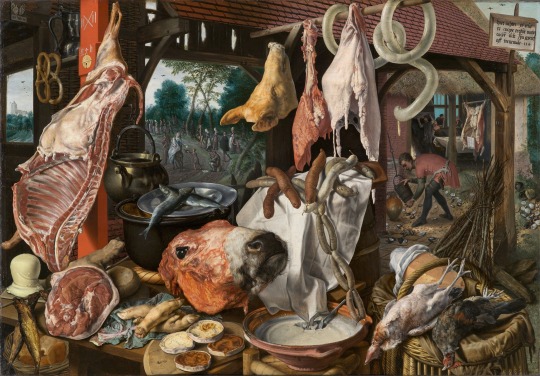#Netherlandish
Explore tagged Tumblr posts
Text

Rogier van der Weyden or Roger de la Pasture (Netherlandish, c.1399-1464) Triptych: The Crucifixion, St. Mary Magdalene, detail, ca.1443-45 Kunsthistorisches Museum Wien
#Rogier van der Weyden#Roger de la Pasture#netherlandish#netherlands#the crucifixion#1400s#art#fine art#european art#classical art#europe#european#fine arts#oil painting#europa#St. Mary Magdalene#Saint Mary Magdalene#St Mary Magdalene#christian#christianity#catholic#catholic art#catholicism#western civilization#angel#flemish
2K notes
·
View notes
Text

Pendant with the Coronation of the Virgin, elephant ivory behind rock crystal, North French or Netherlandish, early 15th Century
From the Met Museum
#pendant#jewellery#fashion#fashion history#north french#french#netherlandish#early 15th century#15th century#1400s#medieval#ivory#rock crystal#gold
791 notes
·
View notes
Text

Incostanza, An Allegory of Fickleness
Artist: Abraham Janssens I (Flemish, 1575–1632)
Genre: Allegory
Date: c. 1617
Medium: Oil on canvas
Collection: National Gallery of Denmark, Copenhagen, Denmark
Description
The present painting shows “fickleness” in keeping with the era’s code books of symbols in art, where the semi-clad woman, the ever-changing moon, and crustaceans - capable of walking sideways - serve as markers for those of a mercurial temperament.
The artist, moved by a visual desire that we would now term voyeurism or fetishism, focuses intently on her breasts, which shine with a brightness even greater than that of the crescent-moon face she holds in her hand.
The breasts are associated with other feminine characteristics: with bodily matters, impulsivity, and the subconscious as well as with fertility and pregnancy.
The woman may be attractive, but she is also potentially dangerous. In contrast to the moon, the sun was typically a symbol of maleness and masculinity, i.e. of intelligence, will, exaltedness, and divinity.
#allegorical art#painting#oil on anvas#allegory of fickleness#inconstanza#woman#semi clad woman#moon#crustaceans#rabbit#abraham janssens i#flemish painter#flemish art#netherlandish#european art#artwork#oil painting#17th century painting
85 notes
·
View notes
Text




~ Aquamanile in the Form of a Lion.
Artist/Culture: German or Netherlandish
Date: late 13th or early 14th century
Period: Late Medieval
Medium: Brass
▪︎This unusual example bears a Hebrew inscription on one side that reads: (On the side and rear hip of the lion): ברוך אתה ה אלהינו מלך העולם אשר קדשנו במצוותיו וצוונו על נטילת ידים ; [Translation] Blessed be God, King of the Universe, who blessed us and instructed us to wash our hands (Baruch ata adonai alokhenu meleh Ha-olam asher Ridshanu bemitsvotsar vetsivanu al netilas yadayim).
#13th century#14th century#art#history#museum#medieval#late medieval#Aquamanile#lion#hebrew#German#Netherlandish#inscription
717 notes
·
View notes
Text

Jan van Eyck, Annunciation, ca. 1434/1436, oil/panel transferred to canvas (National Gallery of Art, Washington D.C.)
Have always loved the rainbow wings on the angel.
27 notes
·
View notes
Text

Anya Taylor Joy (English-American, born 1996).
The Feast of the Passover (detail of left lower panel of The Last Supper Altarpiece), between 1464 and 1467. Dieric Bouts (Netherlandish, circa 1420–1475).


The Last Supper Altarpiece
Saint Peter's Church, Leuven, Belgium.
#fangledeities#anya taylor joy#dieric bouts#passover#christian art#religious art#northern renaissance#netherlandish#fashion photography#dior#weird#art history#last supper#renaissance painting#altarpiece#belgium#leuven
10 notes
·
View notes
Text

Christ Giving His Blessing
Artist: Hans Memling (Netherlandish, c.1430/40-1494)
Date: 1748
Medium: Oil on oak panel
Collection: Norton Simon Museum, Pasadena, CA, United States
Description
Hans Memling was the leading painter in Bruges during the last quarter of the fifteenth century. His Christ Giving His Blessing recalls an iconographic type found in early Christian and Byzantine sacred icons, but echoes the later compositional types of Rogier van der Weyden, in whose workshop Memling presumably worked before settling in Bruges. Unlike the work of his predecessors, however, Memling's portrait of Christ is neither severe nor characterized by tragic pathos. In form and feeling, it presages Italian portraiture from the following decade: the search for clarity and order, the monumental effect achieved by filling the frame with Christ's head and shoulders, and the close-up view of the delicately modeled face against a neutral background. The gentle spirit and grace of the Redeemer, presented in fully human terms in this compelling devotional image, marks Memling’s debt to Rogier, but also his status as someone who transformed religious and portrait imagery throughout Europe from that point forward.
#portrait#christ the redeemer#christianity#blessing#christ#jesus#jesus christ#biblical art#oil on wood#painting#artwork#hans memling#netherlandish#european art#netherlandish culture#gentle spirit#grace#god's love#christ our savior#oil painting#norton simon museum
8 notes
·
View notes
Text

Portrait of Prince Willem II (1626-1650
Artist: Workshop of Gerard van Honthorst (Dutch, 1592–1656)
Date: After 1647
Medium: Oil on canvas
Collection: Mauritshuis, The Hague, Netherlands
William II, Prince of Orange
William II (27 May 1626 – 6 November 1650) was sovereign Prince of Orange and Stadtholder of Holland, Zeeland, Utrecht, Guelders, Overijssel and Groningen in the United Provinces of the Netherlands from 14 March 1647 until his death three years later on 6 November 1650. His death marked the beginning of the First Stadtholderless Period, leading to the rise of Johan De Witt, who stayed in power for the next 22 years.
#portrait#man#standing#prince willem ii#prince of orange#stadtholder of holland#dutch golden age#gerard van honthorst#dutch painter#netherlandish#classic pillar#uniform#blue sash#sword#cloudy skys#17th century painting#artwork#oil on canvas#oil painting#seventeen century
8 notes
·
View notes
Text

Chalice of Saint John the Evangelist [reverse], c. 1470/1475
Hans Memling
A gold chalice holding a thin, green serpent sits in an arched niche in this vertical painting. Light falls across the chalice from our right so it casts a shadow in the shallow gray stone niche. The chalice has a flaring, six-lobed foot, and a knob on the stem is set with red and green, diamond-shaped stones. The slender green snake drapes inside the cup’s round bowl. The serpent’s mouth is open and tongue flicks out to our right, and the tail hangs out of the chalice to our left.
National Gallery of Art, Washington, USA
#found#art#usa#national gallery of art Washington#hans memling#netherlandish#15th century#chalice#Christian art#snake#chalice of St John the Evangelist
6 notes
·
View notes
Text

The Garden of Earthly Delights, Hieronymus Bosch (c.1500) Museo del Prado in Madrid
#art#art history#artists on tumblr#painting#aesthetic#el bosco#bosch#Hieronymus Bosch#hieronymus bosch#el prado#dutch art#netherlandish#Netherlands#netherlands#dutch painter#dutch painting#16th century#16th century art#triptych#garden#oil on panel#oil on canvas#oil painting#15th century#15th century art#1500s#1500s art#1400s#religious painting#religious art
142 notes
·
View notes
Text

Quentin Matsys (Flemish, 1466-1530) The Virgin of the Rosary, n.d. Museo Lázaro Galdiano, Madrid
#Quentin Matsys#flemish art#flemish#flanders#netherlandish#netherlands#antwerp#the virgin of the rosary#1400s#art#fine art#european art#classical art#europe#european#fine arts#oil painting#europa#christian art#christian#christianity#christentum#1500s#catholic#catholic art#catholicism#western civilization
435 notes
·
View notes
Text

Courtiers in a Rose Garden: A Lady and Two Gentlemen, South Netherlandish, 1440-50
From the Met Museum
#tapestry#weaving#textile#courtiers in a rose garden#south netherlandish#netherlandish#1440#1450#1440s#1450s#1400s#15th century#history#medieval
24 notes
·
View notes
Text

Pieter Aertsen (Netherlandish, b. 1508)
A Meat Stall with the Holy Family Giving Alms, 1551
Oil on panel
123 notes
·
View notes
Text

Hercules, Deianira and the Centaur Nessus
Artist: Bartholomeus Spranger (Flemish, 1546–1611)
Date: between 1580 and 1585
Medium: Oil on Canvas
Collection: Kunsthistorisches Museum, Vienna, Austria
Description
The picture is part of a mythological cycle with love stories by Homer and Ovid on which Spranger had been working since the 1580’s as part of the decoration of the imperial rooms in Prague Castle. The Centaur Nessus has abducted Deianeira, the wife of Hercules. Hercules frees Deianeira by killing the centaur with an arrow. The complicated composition is evidence of Spranger’s profound knowledge of Giambologna’s sculptures.
#painting#oil on canvas#mythological art#bartholomeus spranger#flemish painter#netherlandish#love story#homer#ovid#centaur nessus#hercules#deianira#putti#arch#arrows#16th century#european art
7 notes
·
View notes
Text

Monica Bellucci (Italian, born September 20, 1964).
Triptych of Pieter van de Woestijne, central panel, circa 1475. Netherlandish.
Bode Museum, Berlin
#fangledeities#monica bellucci#religious art#early renaissance#northern renaissance#renaissance painting#bode museum#crucifixion#italian model#italian actress#fashion photography#pinups#christian art#art history#sacred art#netherlandish#netherlandish painting
6 notes
·
View notes
Text

God the Father and the Holy Ghost
Artist: Domenico Antonio Vaccaro (Italian, 1678-1745)
Date: 1801-1809
Place of Creation: The Hague
Medium: OIl on Canvas
Collection: The Mauritshuis, The Hague, Netherlands
#painting#oil on canvas#christianity#heaven#god the father#the holy ghost#clouds#angels#christian art#holy bible#domenico antonio vaccaro#italian painter#netherlandish#early 19th century art
8 notes
·
View notes